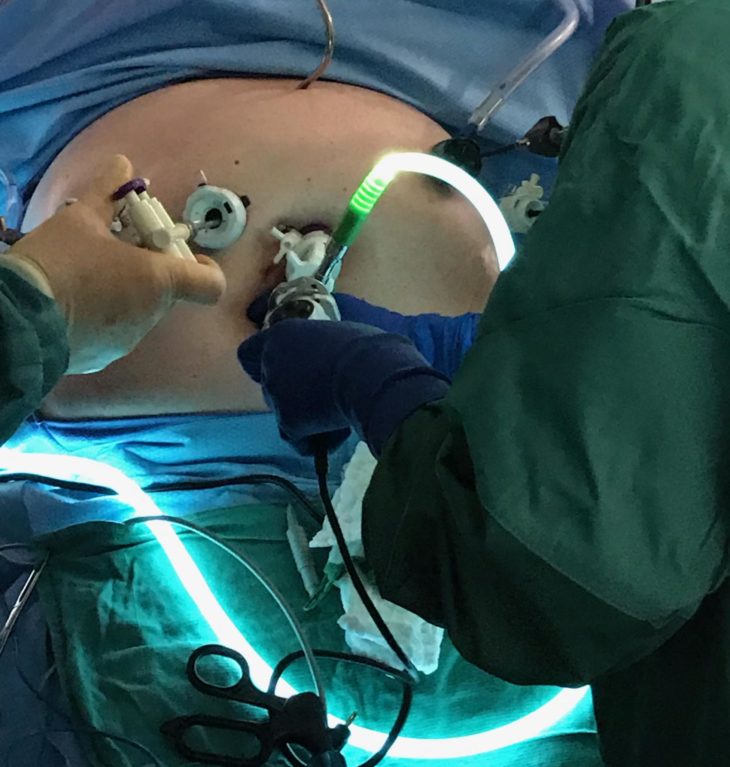Surgery can be smooth and relaxed, even as personnel rotate and change.

By Misty Tuttle
Lead Surgical Technologist
Cone Health, Wesley Long Hospital, Greensboro
Laparoscopic surgery is a team effort. In the OR, in addition to the surgeon, we generally have one or two surgical technologists, a circulating nurse performing documentation, and a CRNA or anesthetist. A resident may observe or assist with surgery as well. In our hospital, team members usually have experience working together. Experienced teams have two clear advantages: 1) They have performed the same procedures many times. 2) Familiarity with the surgeon makes it easier to offer support, anticipate needs, and follow direction.
Although experienced teams make surgery smooth, efficient, and less stressful, it’s often not possible for all the same people to work together. Staff members rotate. People go on vacation. Some change jobs. How can we standardize a high level of teamwork in the OR, even when the same levels of experience and familiarity aren’t there? I think a combination of communication and technology work best.
When surgeons aren’t working with their usual team, it helps when they begin surgery by laying out what will happen and what they will need from team member. All the staff members need to be honest about their level of experience with the specific surgery and feel free to ask questions. Our surgeons usually do an excellent job of communicating what they’re doing during surgery and keeping us on the same page throughout the procedure. Technology contributes to that communication, with a large screen (Stryker) that allow everyone in the room to see the scope view as well as patient’s vital signs.
Together, these efforts to communicate help the group work as a team toward their shared goal of achieving the best results for our patients. When some less experienced team members are in the room, communication can elevate their performance. We also look for ways to level the field with technology.
As a surgical technologist, I have seen less experienced technologists struggle to control the scope and light cord during complex or lengthy procedures. When surgery produces significant smoke, blood, or grease that repeatedly impair visibility, necessitating repeated scope removal and cleaning, newer technicians might take more time for cleaning or find it difficult to return to the same angle and view after cleaning. To maintain visibility without interruptions, we recently tried an in-abdomen lens cleaning device (ClickClean, Medeon). A biocompatible transparent film covers the scope lens, and the surgeon or surgical technician clicks a trigger to advance the film and get a clean, clear view. The technology elevates the performance of newer technicians, whose inexperience is less taxing for the surgeon when we eliminate scope removal and cleaning.
With clear communication, good laparoscopic visibility, and technologies that help staff members work efficiently at a high level, the team is stronger. Surgeons can remain focused on surgery while other team members provide all the necessary support, smoothly working together as a whole.
The content presented on this page is provided for informational and/or educational purposes. This material represents the views and opinions of its authors and should not be construed as representing or reflecting the official position, views or opinions of the Society of Laparoendoscopic Surgeons. The authors of the work are solely responsible for its content.



